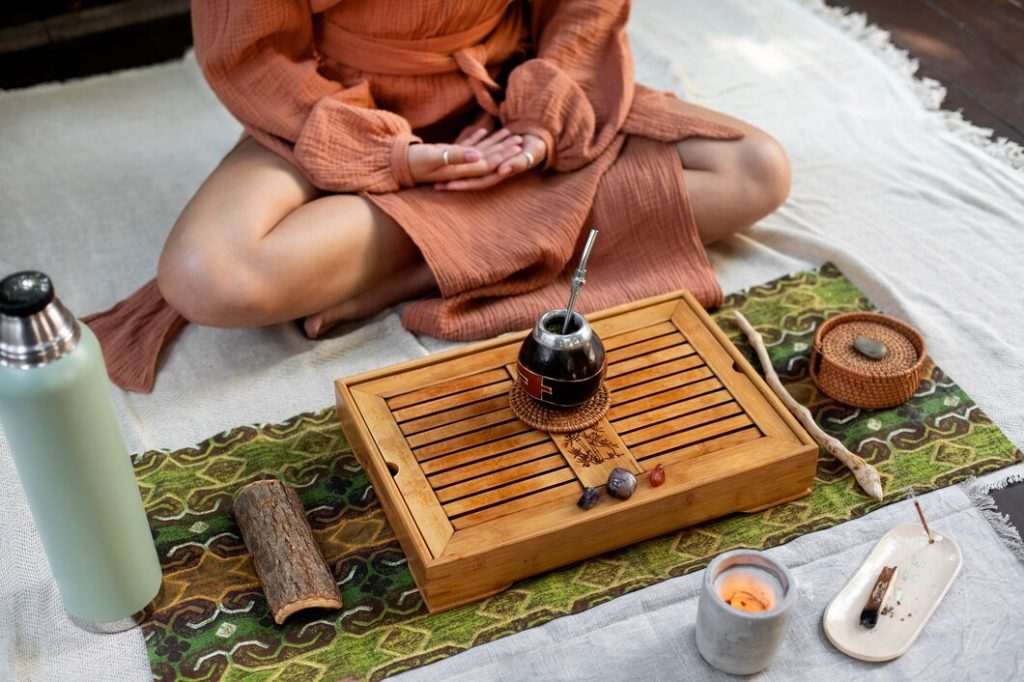Symptoms of UTIs in children can vary depending on the child's age.
Here are the common signs:
In Infants:
- Fever (sometimes the only symptom)
- Irritability or fussiness
- Poor feeding or vomiting
- Diarrhea
- Unexplained crying, especially when urinating
- Foul-smelling or cloudy urine
- Jaundice (in newborns)
In Toddlers and Older Children:
- Frequent urination or urgency to urinate
- Pain or burning sensation during urination
- Abdominal or back pain (often in the lower part of the abdomen or the sides)
- Bedwetting (in a child who was previously dry at night)
- Fever and chills
- Blood in the urine (hematuria)
- Cloudy, dark, or foul-smelling urine
- Incomplete bladder emptying
Management of UTIs in Children
1. Diagnosis:
- Urine Sample: A clean-catch urine sample is often collected for testing. In infants, a catheter or suprapubic aspiration might be used to obtain a sample.
- Urinalysis and Urine Culture: These tests help identify the presence of bacteria and determine the specific type of bacteria causing the infection.
2. Supportive Care:
- Hydration: Ensure the child drinks plenty of fluids to help flush out bacteria from the urinary tract.
- Pain Relief: Warm baths or heating pads can help relieve pain in older children.
- Follow-Up:
- Repeat Urine Tests: To ensure the infection has cleared, especially if symptoms persist after treatment.
- Imaging Tests: In recurrent UTIs, or if there is concern about underlying abnormalities, imaging studies like an ultrasound, voiding cystourethrogram (VCUG), or renal scan might be recommended.
3. Prevention:
- Good Hygiene: Teach children proper wiping techniques (front to back) to avoid introducing bacteria into the urinary tract.
- Frequent Urination: Encourage regular bathroom breaks to prevent the bladder from becoming too full.
- Avoid Constipation: Ensure a high-fiber diet and adequate fluid intake to prevent constipation, which can contribute to UTIs.
- Avoid Irritants: Avoid bubble baths and harsh soaps that can irritate the urethra.
If a child is showing symptoms of a UTI, it’s important to seek medical care promptly to prevent complications such as kidney damage.
Prevention of Urinary Tract Infections (UTIs) in Children
Preventing UTIs in children involves several strategies that focus on maintaining good hygiene, proper hydration, and healthy bathroom habits. Here are some key preventive measures:
1. Proper Hygiene:
- Wiping Technique: Teach children, especially girls, to wipe from front to back after using the toilet. This prevents bacteria from the anus from entering the urinary tract.
- Regular Baths: Bath young children regularly, but avoid using harsh soaps, bubble baths, or scented products that can irritate the urethra.
2. Encourage Regular Urination:
- Frequent Bathroom Breaks: Encourage children to urinate regularly, about every 2-3 hours, to prevent bacteria from accumulating in the bladder.
- Complete Bladder Emptying: Ensure that children take their time when urinating to completely empty the bladder.
3. Stay Hydrated:
- Adequate Fluid Intake: Encourage your child to drink plenty of water throughout the day. This helps dilute the urine and flush bacteria from the urinary tract.
- Limit Sugary Drinks: Reduce the intake of sugary beverages, which can sometimes increase the risk of infection.
4. Prevent Constipation:
- Dietary Fiber: Ensure your child consumes a diet rich in fruits, vegetables, and whole grains to prevent constipation, which can put pressure on the bladder and lead to UTIs.
- Hydration: Adequate water intake also helps prevent constipation.
5. Appropriate Clothing:
- Loose-Fitting Clothes: Dress children in loose-fitting cotton underwear and clothing. Tight clothes and synthetic fabrics can trap moisture, creating an environment for bacterial growth.
- Diaper Changes: For infants and toddlers, change diapers frequently to prevent prolonged contact with stool and urine, which can increase the risk of infection.
6. Avoid Irritants:
- Gentle Cleansers: Use mild, unscented soap for bathing. Avoid bubble baths and other irritants that can cause urethral irritation.
- Proper Diaper Use: For children still in diapers, ensure that diapers are not too tight and are changed promptly when wet or soiled.
7. Care Taken for Children with UTIs
If your child has been diagnosed with a UTI, proper care is crucial to ensure full recovery and prevent complications:
Encourage Fluids:
- Increase Fluid Intake: Encourage your child to drink more fluids, especially water, to help flush out the bacteria.
Monitor Symptoms:
- Watch for Symptoms: Keep an eye on your child’s symptoms. If there’s no improvement within 48 hours of starting antibiotics, or if symptoms worsen, contact your healthcare provider.
Follow-Up Care:
- Post-Treatment Urine Test: Depending on the severity of the infection, the doctor might recommend a follow-up urine test to ensure the infection has cleared.
- Imaging Studies: For children with recurrent UTIs or other risk factors, the doctor may suggest imaging studies to check for any underlying abnormalities in the urinary tract
Educate Your Child:
- Teach Healthy Habits: Educate older children about the importance of drinking water, urinating regularly, and maintaining good hygiene to prevent future infections.
Taking these preventive measures and ensuring proper care during and after a UTI can help reduce the risk of recurrence and promote overall urinary tract health in children.
Management in Ayurveda for these Children
In Ayurveda, the management of urinary tract infections (UTIs) in children focuses on natural remedies, diet, lifestyle modifications, and herbal treatments to balance the body’s doshas (Vata, Pitta, and Kapha) and promote healing. Here is how Ayurveda approaches the management of UTIs in children:
Ayurvedic Management of UTIs in Children
1. Herbal Remedies:
Ayurveda uses specific herbs known for their antimicrobial, anti-inflammatory, and diuretic properties to treat UTIs. Some commonly used herbs include:
- Punarnava (Boerhavia diffusa): A diuretic herb that helps flush out toxins and bacteria from the urinary tract.
- Gokshura (Tribulus terrestris): Known for its diuretic and anti-inflammatory properties, it helps in soothing the urinary tract and reducing infection.
- Varuna (Crataeva nurvala): Used to support kidney and bladder health, helping to manage infections and prevent stones.
- Coriander Seeds (Coriandrum sativum): Has cooling and diuretic properties, helping to soothe burning sensations and cleanse the urinary tract.
- Shatavari (Asparagus racemosus): This herb is particularly good for balancing Pitta dosha and supporting urinary tract health.
These herbs may be given in the form of decoctions, powders, or formulations like Chandraprabha Vati or Gokshuradi Guggulu, under the guidance of an Ayurvedic practitioner.
2. Diet and Lifestyle Modifications:
- Hydration: Encourage the child to drink plenty of water to help flush out toxins and maintain a clean urinary tract. Coconut water and barley water are also recommended for their cooling and diuretic effects.
- Cooling Foods: Incorporate foods that help balance the Pitta dosha, such as cucumber, watermelon, and leafy greens. Avoid spicy, sour, and salty foods that can aggravate Pitta.
- Aloe Vera Juice: A small amount of aloe vera juice can be given to soothe the urinary tract and reduce inflammation.
- Warm Water Baths: Soaking the child in a warm water bath with a few drops of sandalwood or tea tree oil can provide relief from discomfort.
3. Panchakarma for Recurrent UTIs:
For children experiencing recurrent UTIs, Panchakarma (Ayurvedic detoxification) might be recommended. However, these treatments are generally modified and gentle when administered to children. Common procedures include:
- Virechana (Therapeutic Purgation): Helps cleanse the digestive system and reduce the Pitta dosha, which is often linked to UTIs.
- Basti (Medicated Enema): Helps balance Vata and Pitta, and may be used in specific cases under professional supervision.
4. Ayurvedic Home Remedies:
- Coriander and Cumin Tea: A mild tea made from coriander seeds and cumin seeds can be given to reduce burning sensation and cleanse the urinary tract.
- Cranberry Juice: Although not traditionally Ayurvedic, cranberry juice is often recommended to prevent bacteria from adhering to the bladder walls.
5. Lifestyle Guidance:
- Proper Hygiene: Teach the child to practice good hygiene, including proper washing and drying of the genital area.
- Frequent Urination: Encourage the child to urinate regularly and avoid holding urine for long periods.
- Avoid Constipation: Provide a diet rich in fiber to prevent constipation, which can contribute to UTIs.
Important Considerations:
- Consultation: Always consult with a qualified Ayurvedic practitioner before starting any treatment, especially for children.
- Complementary Approach: Ayurvedic management can be used alongside conventional treatments, but it should not replace antibiotics or other medical treatments when necessary.
- Monitoring: Regular monitoring of the child’s symptoms and progress is important to ensure effective management and prevent complications.
Ayurveda offers a holistic approach to managing UTIs in children, focusing on both immediate relief and long-term prevention through dietary, lifestyle, and herbal interventions.
How yoga helps in urinary tract infections
Yoga can be a supportive practice in managing and preventing urinary tract infections (UTIs) by improving overall health, enhancing circulation, and reducing stress, which can contribute to a healthier urinary system. Here’s how yoga can help:
1. Promotes Relaxation and Stress Reduction:
- Stress and UTIs: Stress can weaken the immune system, making the body more susceptible to infections, including UTIs. Yoga helps manage stress through breathing exercises and relaxation techniques.
- Yoga Practices: Gentle yoga poses combined with deep breathing (Pranayama) can help calm the nervous system, reduce stress, and improve immune function.
2. Improves Circulation and Lymphatic Flow:
- Enhanced Blood Flow: Certain yoga poses help improve circulation to the pelvic region, supporting kidney function and urinary health.
- Lymphatic Drainage: Yoga stimulates the lymphatic system, which helps in removing toxins and waste products from the body, reducing the likelihood of infections.
3. Strengthens Pelvic Floor Muscles:
- Pelvic Floor Support: Strong pelvic floor muscles help maintain proper bladder control and support the urinary tract organs.
- Relevant Yoga Poses: Poses like Mula Bandha (Root Lock) and Bridge Pose (Setu Bandhasana) help strengthen the pelvic floor muscles, promoting better bladder health and function.
4. Promotes Digestive Health:
- Preventing Constipation: Constipation can put pressure on the bladder and increase the risk of UTIs. Yoga poses that stimulate digestion can help maintain regular bowel movements.
- Poses for Digestion: Wind-Relieving Pose (Pavanamuktasana) and Twist Poses (like Ardha Matsyendrasana) aid digestion and help relieve constipation.
5. Encourages Hydration and Mindful Living:
- Mind-Body Connection: Yoga encourages mindfulness, which can make one more aware of the body’s needs, such as staying hydrated and practicing good hygiene—both important for preventing UTIs.
- Pranayama (Breathing Exercises): Practices like Nadi Shodhana (Alternate Nostril Breathing) can improve oxygenation, reduce stress, and promote overall wellness.
Specific Yoga Poses for UTI Relief and Prevention:
1. Bhujangasana (Cobra Pose):
- Benefits: Stimulates abdominal organs, enhances circulation in the pelvic region, and helps in detoxification.
2. Setu Bandhasana (Bridge Pose):
- Benefits: Strengthens the pelvic floor, supports bladder health, and improves circulation to the lower body.
3. Baddha Konasana (Bound Angle Pose):
- Benefits: Opens the hips, stimulates the pelvic area, and supports bladder function.
4. Pavanamuktasana (Wind-Relieving Pose):
- Benefits: Aids in digestion, relieves bloating and constipation, and reduces pressure on the bladder.
5. Supta Baddha Konasana (Reclining Bound Angle Pose):
- Benefits: A deeply relaxing pose that opens the pelvic region, reduces stress, and promotes a calm state of mind.
Breathing Exercises (Pranayama) for UTI Management:
1. Nadi Shodhana (Alternate Nostril Breathing):
- Benefits: Balances the nervous system, reduces stress, and improves immune function.
2. Sheetali Pranayama (Cooling Breath):
- Benefits: Helps in cooling the body, reducing Pitta-related imbalances, and soothing burning sensations associated with UTIs.
Lifestyle Integration:
- Regular Practice: Integrating these yoga practices into a daily routine can help maintain a healthy urinary system and prevent recurrent infections.
- Mindfulness: Yoga encourages a mindful approach to health, promoting awareness of habits that may contribute to or prevent UTIs.
Precautions:
- Gentle Practice: During an active UTI, it’s important to practice gentle yoga and avoid poses that put excessive pressure on the bladder or cause discomfort.
- Consultation: If you’re experiencing frequent UTIs or severe symptoms, it’s important to consult a healthcare provider in conjunction with practicing yoga.
Consultation:
If you’re experiencing frequent UTIs or severe symptoms, it’s important to consult a healthcare provider in conjunction with practicing yoga. By incorporating yoga into a daily routine, individuals can strengthen their body’s natural defenses, improve urinary health, and promote overall well-being.





